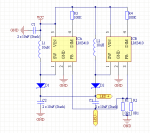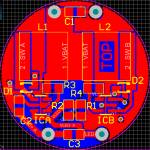benmwv
0
- Joined
- Sep 10, 2010
- Messages
- 1,380
- Points
- 48
Jerry is absolutely right. As long as the PCB layout differs, it can be sold freely by anyone. Also, there is no IP in the use of the mosfet as a protection device. That is nothing new. National owns the IP for the remainder of the circuit.
I'm not trying to legally control anybody here. If somebody really desires to sell the circuit without permission there is nothing I can do to stop them.
I never claimed to have pioneered the use of a mosfet as a protection device. As far as I know though I am the first to put it in a circuit with an lm3410. National does not own a circuit I made just because part of it was taken from their datasheet. But that doesn't even matter because the disclaimer wasn't directed at the schematic. If you want to take my schematic and base a circuit board design from it go ahead.
Also, by your logic there is no part of that circuit that national owns except for their IC sitting there with nothing connected to it considering that the use of an inductor to boost voltage is not new, the use of capacitors to smooth ripple isn't new, the use of resistors to sense current is not new, etc.
Is it not enough that we try to help the community by posting cheap boost driver designs for everyone to use, but we should also provide for everyone to make a profit off of it without giving a little back? I spent a good deal of money making and perfecting this design for the community, excuse me for wanting to gain some of it back!






